When I think about butcher block countertops, I’m immediately drawn to the warmth and character they bring into a kitchen. There’s something about the natural wood grain, the texture, and the earthiness that makes a space feel cozy and inviting. Used butcher block countertops, in particular, offer a unique charm because they come with a history. The wear and tear, the marks, and the scratches tell a story. It’s like adding a piece of lived-in art to your kitchen. What I love most is that, with a little care, you can give these countertops new life and make them the centerpiece of your kitchen.
One of the main reasons people are drawn to used butcher block countertops is the environmental benefit. Reusing materials is a great way to reduce waste and repurpose something that still has a lot of life left in it. When I work with used butcher blocks, I feel like I’m contributing to sustainability while still getting an amazing design element. Plus, reclaimed wood has this natural, worn-in look that you just can’t get with brand-new materials. It feels authentic, and I think that’s a huge part of its appeal.
Refinishing used butcher block countertops is where the magic happens. When you first get a used piece, it might look a bit rough, but that’s nothing a good sanding and refinishing can’t fix. I start by inspecting the wood for any deep gouges, stains, or damage. Light surface scratches are usually no big deal, but deep cuts or water damage may need extra attention. Sanding the surface down with coarse grit sandpaper can remove a lot of imperfections, and from there, I gradually move to finer grits to achieve a smooth, even finish.
After sanding, applying a protective finish is key. Butcher block countertops are porous, which means they can absorb moisture and stains if left untreated. I typically use a food-safe mineral oil or beeswax to condition the wood. These natural finishes not only protect the wood from spills and moisture but also bring out the rich tones and grain patterns. There’s something satisfying about watching the wood come to life as the oil soaks in. Over time, regular oiling helps keep the wood looking fresh and prevents it from drying out.
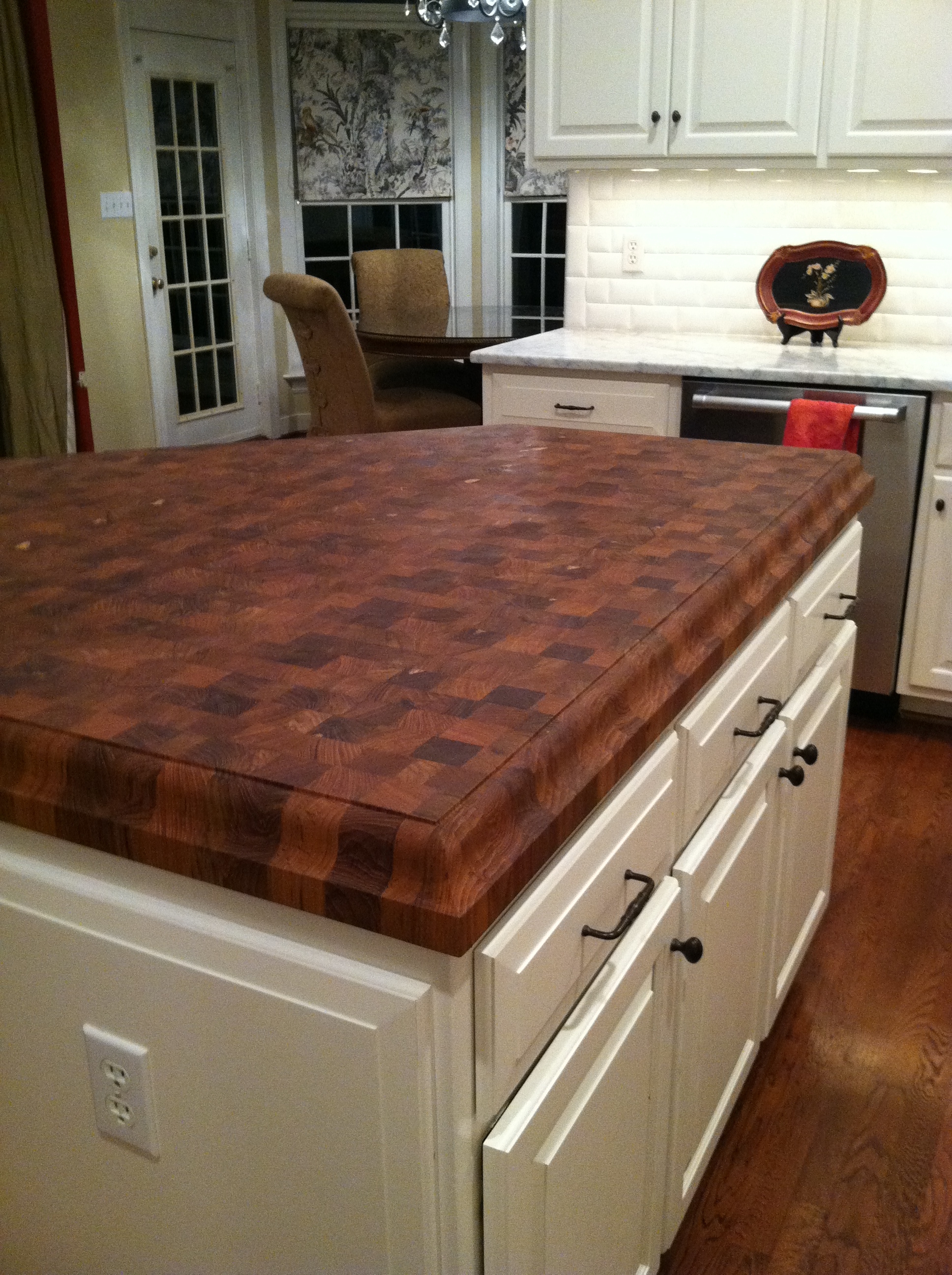
One of the challenges with used butcher block countertops is dealing with potential stains or discoloration from their previous life. But even these imperfections can be minimized with some TLC. For instance, if there are dark spots from water or food spills, a little hydrogen peroxide can lighten the stain. For tougher spots, sanding the area or using a paste made from baking soda and water can help lift the discoloration. I love how these small fixes can restore the wood without losing its rustic charm.
Butcher block countertops require regular maintenance, and that’s something to keep in mind, especially with a used piece. Over time, the surface can develop scratches and wear, but I see that as part of the material’s character. Small scratches can easily be sanded out, and reapplying oil every month or so keeps the wood in good condition. I also recommend using cutting boards to avoid deep cuts and never placing hot pots directly on the surface. With a little care, used butcher block countertops can last for years and age beautifully.
One of the reasons butcher block countertops are so popular is their versatility. They can fit into almost any kitchen style, from rustic farmhouse to sleek and modern. I’ve seen used butcher block countertops paired with everything from painted cabinets to stainless steel appliances, and they always seem to bring a natural warmth to the space. In a world full of synthetic materials, wood countertops offer a tactile, organic element that I think many homeowners appreciate.
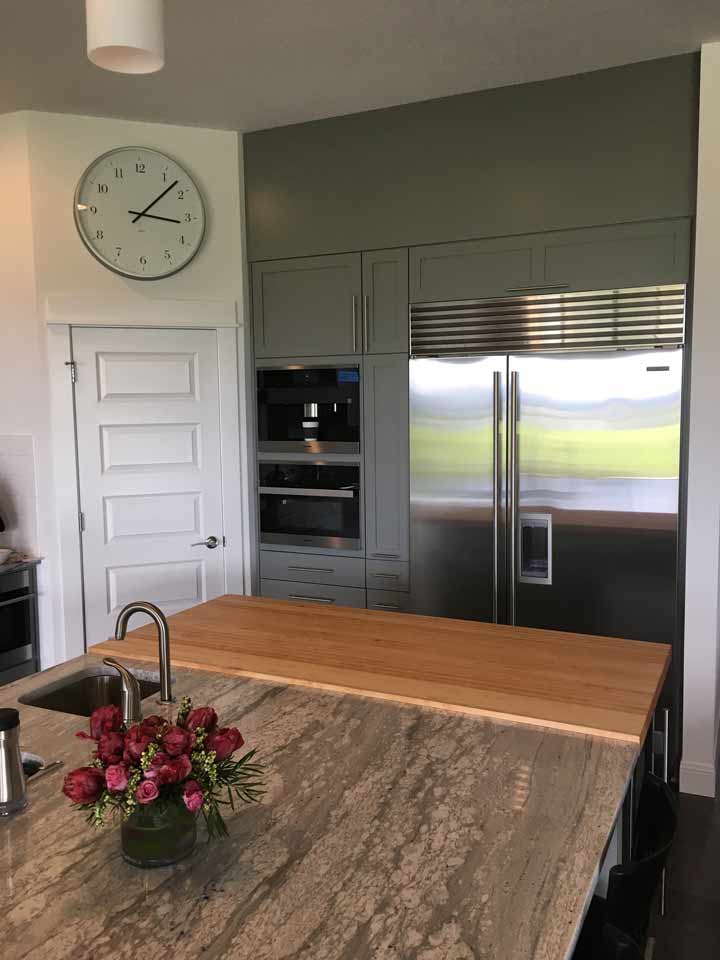
For those on a budget, used butcher block countertops are a great way to achieve a high-end look without the high price tag. A new butcher block can be expensive, but finding a used piece from a salvage yard or a renovation project can save you a lot of money. Even if the piece needs some refinishing, the cost of materials and time spent refurbishing it is usually far less than purchasing new countertops. Plus, you get the bonus of knowing you’re using reclaimed materials.
One thing I’ve learned through working with used butcher blocks is that every piece is unique. Because these countertops are made from real wood, no two pieces are the same. The grain, the color, the texture – all of it varies from piece to piece, which gives your kitchen a custom look that’s impossible to replicate with synthetic materials. I love the sense of uniqueness and individuality that butcher block countertops bring to a space.
Another advantage of butcher block countertops, used or new, is their durability. Wood is surprisingly resilient when properly cared for. While it may show some wear over time, this can often be sanded away, making it look as good as new. I’ve worked on used butcher block pieces that have been in kitchens for decades, and with the right care, they still look stunning. The ability to refinish the surface multiple times extends the lifespan of these countertops, which is another reason why they’re such a smart investment.
In terms of installation, used butcher block countertops can be easier to work with than heavier materials like stone. They can be cut to size using basic tools, and because wood is relatively light compared to granite or quartz, it’s easier to handle during installation. I’ve found that this makes them a great option for DIYers who want to take on their kitchen renovation. Plus, if you’re installing the countertop yourself, you can take your time making sure the fit is perfect.
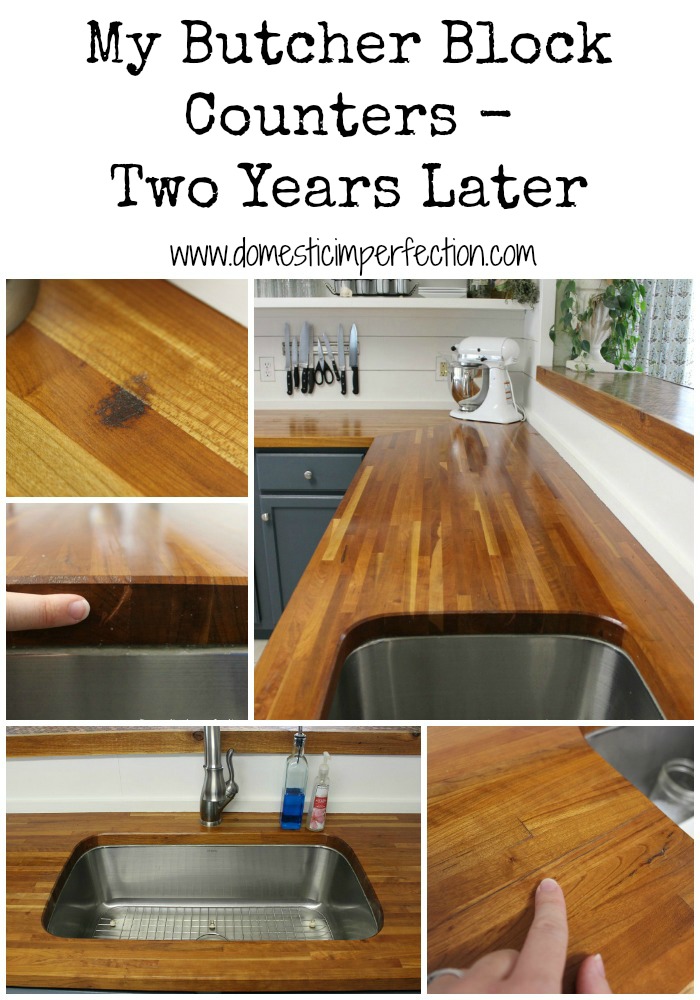
Another benefit I’ve noticed is that butcher block countertops are gentle on dishware and kitchen tools. If you’ve ever dropped a plate on a granite countertop, you know how unforgiving hard surfaces can be. The butcher block has a bit of give, which means it’s less likely to cause chips or breaks if you accidentally drop something on it. This softer surface is also more comfortable to work on, especially if you spend a lot of time prepping food or baking.
Used butcher block countertops also can improve with age. Unlike materials that might start to look worn or outdated over time, butcher block develops a patina that can add to its appeal. The small dings and scratches that accumulate with daily use give the countertop a lived-in look that many people find charming. It’s a material that tells a story, and I think that’s one of the reasons why it remains such a popular choice.
Despite their beauty, some people worry about the upkeep of butcher block countertops. They indeed require more maintenance than something like quartz, but I’ve found that the effort is worth it. Once you get into the habit of oiling the surface regularly and cleaning it properly, maintaining butcher block is relatively easy. Plus, the natural look and warmth it adds to the kitchen far outweigh the small amount of upkeep required.
Last, I’ve seen that used butcher block countertops can be incredibly versatile in how they’re used. While most people think of them for kitchen counters, they also work beautifully as islands, bar tops, or even in laundry rooms. The material’s adaptability means you can get creative with how and where you use it in your home. I love how butcher block can make a space feel cohesive and warm, even in unexpected areas.

Common Mistakes to Avoid
One of the biggest mistakes people make with used butcher block countertops is not refinishing them properly. If you don’t take the time to sand the surface evenly or apply the right finish, the wood can remain vulnerable to water damage and stains. It’s essential to give the wood a good sanding to remove any old finishes or stains and to apply a food-safe oil or wax regularly to keep the surface protected.
Another common mistake is neglecting regular maintenance. Butcher block countertops require ongoing care, such as oiling to prevent the wood from drying out and cracking. Some people think they can skip this step, but over time, lack of maintenance can cause the wood to warp or split. Setting a reminder to oil the surface once a month is a good habit to get into.
A big oversight I’ve seen is using harsh chemicals or abrasive cleaners on butcher block countertops. Because wood is porous, it can absorb these chemicals, which can be harmful if you’re using the surface for food prep. Instead, stick to mild dish soap and water for daily cleaning, and avoid using products with bleach or ammonia.
Improper handling during installation can also cause issues. Unlike stone countertops, wood can warp if it’s not properly supported or if it’s exposed to moisture during the installation process. Making sure the countertop is installed on a stable, level surface is crucial for preventing any long-term damage.
Last, some people place hot pans or dishes directly on the butcher block, thinking it’s durable enough to handle the heat. However, this can leave burn marks or discoloration on the surface. Always use trivets or hot pads to protect the wood from high temperatures.
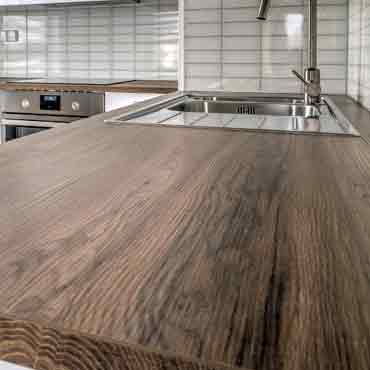
How often should I oil my butcher block countertop?
It’s recommended to oil your butcher block countertop at least once a month, especially if it’s used frequently. The oil helps to condition the wood and prevent it from drying out, cracking, or absorbing moisture. With regular oiling, the countertop will maintain its beautiful finish and be more resistant to stains and damage.
Can I use my butcher block countertop as a cutting board?
While butcher block countertops are durable, it’s best to use a separate cutting board for food prep. Cutting directly on the countertop can lead to deep scratches and gouges, which can damage the surface over time. Additionally, using a cutting board helps to prevent cross-contamination when preparing food.
What’s the best way to clean a butcher block countertop?
For daily cleaning, use a mild dish soap and warm water to wipe down the surface. Avoid using harsh chemicals or abrasive cleaners, as they can damage the wood. For tougher stains, a paste made from baking soda and water can help lift the stain without harming the wood.
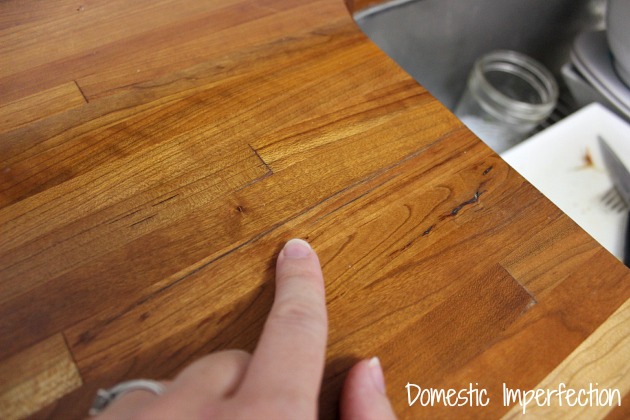
Can I refinish a used butcher block countertop?
Yes, one of the benefits of a butcher block is that it can be refinished multiple times. If the surface becomes scratched or stained, sanding it down and reapplying a protective finish can make it look like new again. Refinishing is a great way to extend the life of a used countertop.
How do I prevent water damage on my butcher block countertop?
To prevent water damage, it’s important to apply a food-safe oil or wax regularly, which creates a barrier between the wood and any moisture. Additionally, avoid leaving standing water on the surface, especially near sinks or faucets, and always wipe up spills promptly.
Are butcher block countertops durable?
Yes, butcher block countertops are very durable when properly cared for. They can withstand regular kitchen use, and small scratches or dents can often be sanded out. However, they do require regular maintenance, such as oiling and cleaning, to keep them in good condition over time.
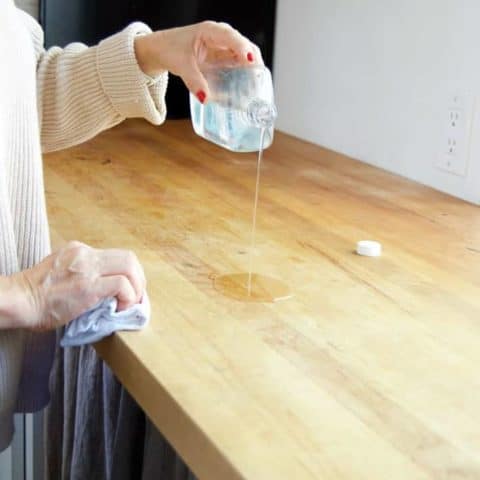
My Take on Butcher Block Countertops”Woodnu0027t” You Like to Know

Iroko Wood Countertops, Butcher Block Countertops, Bar Tops

Related articles:
- Butcher Block Countertops Cottage
- Stain Butcher Block Countertops
- Butcher Block Countertops Vintage
- Butcher Block Countertop Farmhouse Sink
- Mahogany Butcher Block Countertops
- Butcher Block Countertop For Kitchen Island
- Can You Paint Butcher Block Countertops
- Butcher Block Countertops With White Cabinets
- Pine Butcher Block Countertops
- Butcher Block Countertops Walnut